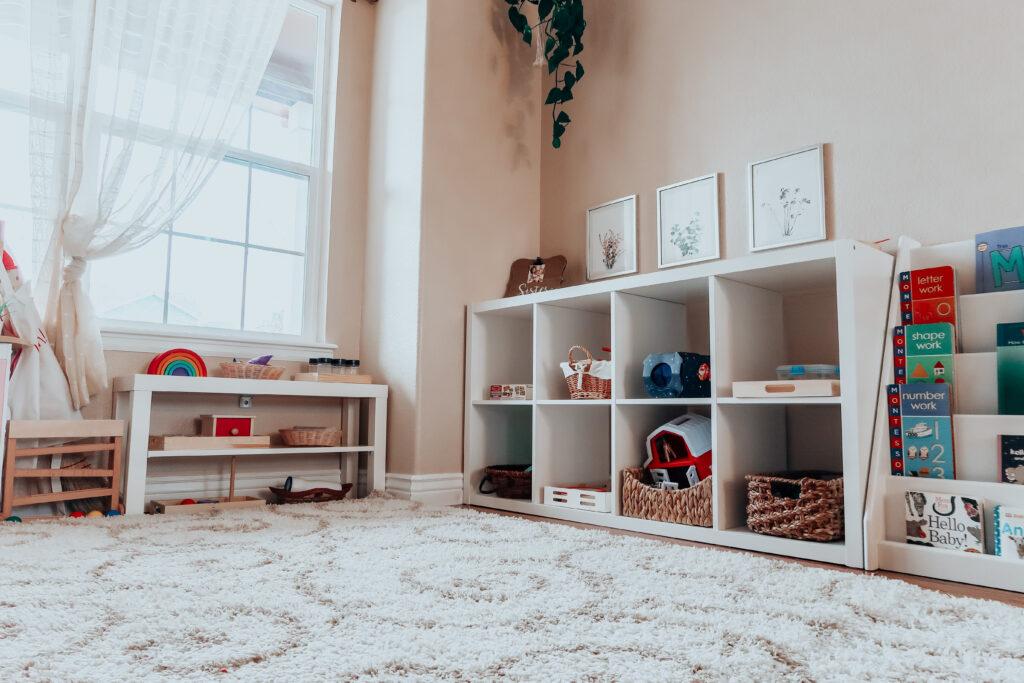
How can you implement Montessori principles at home?
January 29, 2024
Implementing Montessori principles at home involves creating a supportive environment that fosters independence, curiosity, and a love of learning. Here are practical steps to implement Montessori at home:
-
Create a Prepared Environment:
- Designate specific areas for different activities, such as a reading corner, art station, and practical life area. Ensure that materials are organized and easily accessible.
-
Child-Accessible Spaces:
- Arrange furniture and shelves at a child’s height to promote independence. Ensure that your child can reach and manage their belongings and activities without constant assistance.
-
Simplify and Declutter:
- Keep the environment clutter-free by providing a limited selection of toys and materials. Rotate toys periodically to maintain interest and avoid overwhelming the child.
-
Practical Life Activities:
- Integrate practical life activities into daily routines. Involve your child in tasks like setting the table, pouring water, sweeping, or folding clothes. These activities enhance motor skills and build confidence.
-
Child-Centred Activities:
- Follow your child’s interests when selecting activities and materials. Provide a variety of age-appropriate choices that encourage exploration, creativity, and problem-solving.
-
Encourage Independence:
- Foster independence by allowing your child to do things on their own. Teach self-care skills, such as dressing, washing hands, and preparing simple snacks. Encourage them to take responsibility for their belongings.
-
Promote Outdoor Exploration:
- Create opportunities for outdoor play and exploration. Allow your child to connect with nature through activities like gardening, exploring the backyard, or going for nature walks.
-
Focus on Process, Not Just Results:
- Emphasize the learning process over end results. Encourage your child to explore, experiment, and learn through hands-on experiences. Celebrate their efforts and curiosity.
-
Respect the Child’s Pace:
- Allow your child to learn and develop at their own pace. Avoid pushing them to achieve specific milestones quickly. Provide support and encouragement as they progress.
-
Model Positive Behaviour:
- Be a positive role model by demonstrating kindness, respect, and patience. Show your child how to handle challenges calmly and encourage them to learn from mistakes.
-
Establish Routines:
- Create consistent daily routines that provide structure and predictability. Routines help children feel secure and develop a sense of order in their daily lives.
-
Create a Language-Rich Environment:
- Surround your child with language-rich experiences. Read books together, engage in conversations, and expose them to a variety of vocabulary. Encourage storytelling and imaginative play.
-
Support Sensitive Periods:
- Recognize and support your child’s sensitive periods by providing appropriate learning materials and activities that align with their developmental needs and interests.
-
Involve Children in Decision-Making:
- Include your child in decision-making processes when appropriate. Discuss choices, listen to their preferences, and involve them in family decisions to foster a sense of responsibility.
-
Limit Screen Time:
- Minimize screen time and encourage real-world experiences. Provide hands-on activities and opportunities for creative expression instead of relying on digital devices for entertainment.
Implementing Montessori principles at home can beautifully complement your child’s experience in a Montessori school. By setting up a child-friendly space with accessible materials and opportunities for practical life activities, you support their independence and natural desire to learn. This home environment, combined with the structured, hands-on approach they experience at school, creates a cohesive and enriching experience that nurtures their holistic development and fosters a lifelong love for exploration and learning.


